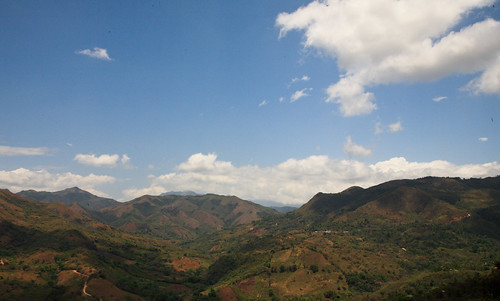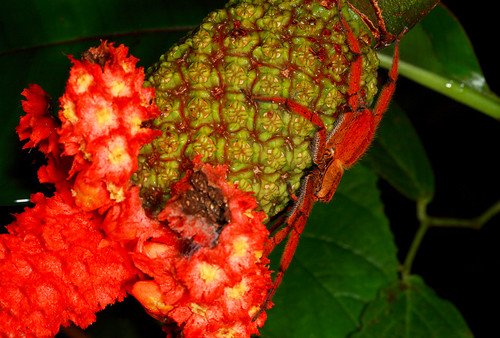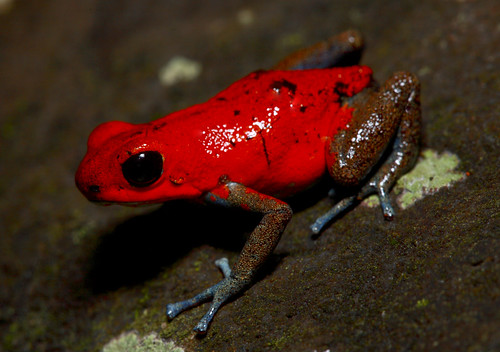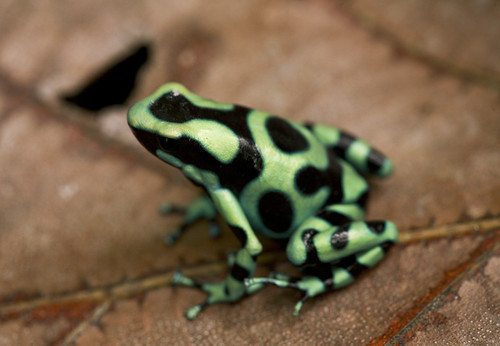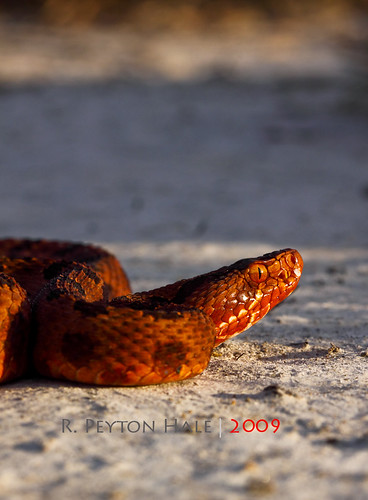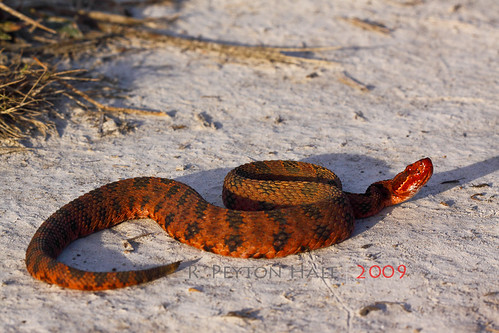 It isn't long before we find critters in the jungle. within 5 minutes of walking into the full canopy, we here the calls of Agalychinus calidryas, the red eyed tree frog. With the added reach provided by a snake hook, we were able to pull down overhanging branches where the calling males were perched. We took a moment to grab a few photos of our charismatic find, then placed him back upon his perch to continue serenading the females close by. On the lower vegetation, anoles were sleeping on top of and in between the leaves. Despite our rustling, they remained frozen in place while our flashes filled the forest vicinity with white light.
It isn't long before we find critters in the jungle. within 5 minutes of walking into the full canopy, we here the calls of Agalychinus calidryas, the red eyed tree frog. With the added reach provided by a snake hook, we were able to pull down overhanging branches where the calling males were perched. We took a moment to grab a few photos of our charismatic find, then placed him back upon his perch to continue serenading the females close by. On the lower vegetation, anoles were sleeping on top of and in between the leaves. Despite our rustling, they remained frozen in place while our flashes filled the forest vicinity with white light.Eyes were always searching, hoping to catch a glimpse of one of the forests common inhabitants, the eyelash viper (Bothriecis schlegleii) named for the exaggerated scalation above the eyes. These small vipers are polymorphic, ranging in colors that conceal their presence amongst the bark and vegetation to vivid yellow or orange that blend in with the brilliant floral and fruit ensembles of tropical plants . They frequently inhabit the 1-2m height of the vertical vegetation structure waiting to ambush lizards or frogs. Bites from this species are not fatal, but due to their behavior bites to extremities and the face are common. This has been one of the species I have longed to see in the wild and photograph in detail, so I'm very anxious as I walk around peering at every limb while trying to keep up and the shine of lights in my view. Huntsmen spiders were frequent on the vegetation as well, and other large types similar to the orb-weavers found in the U.S. - but MUCH bigger. It wasn't til this time I realized that my friend was terrified of bugs...which made the trip all the more interesting!
As we continued on, we came across an interesting find - mannequin birds sleeping in the low trees. These birds are moderately colored with shades of yellow, white and brown, but make up for it with an outstanding call. They tolerated our flashes, grabbing a couple photos of both the male and female and we moved on to see what else we could find. At the bottom of the hill we came to a small creek with shallow depression pools off to the sides. Above the pools were more red eyed tree frogs hanging on to palm-like fronds. In the creek, there were larger ranid type frogs hopping into the shadows. One of the better finds in the creek was a large adult smokey jungle frog - this bullfrog sized amphibian is colored with contrasting shades of brown and vocalizes with a call that resembles a low hooting that gives an eerie feel to the darkness of the jungle.
We turned back after the creek and was planning on calling it an evening. We were all a bit disappointed that we hadn't come across any snakes, but still satisfied with our numerous finds that night. Just as we got close to the cottage our guide spotted a fruiting tree along the path. The tree was filled with naranjillos - fruit of the Inca, a citrus like fruit that had the exterior texture of a tomato. Mario's smile suggested that this would make for an excellent addition to breakfast. At 2:30AM we called it a night, a looong day of travel behind us, and the anticipation of what awaited us tomorrow....

